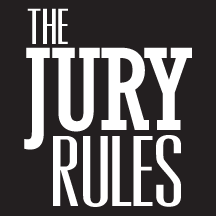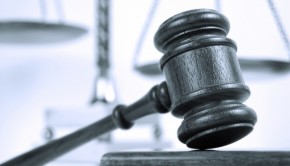This Ain’t Baseball, It’s Boxing – Forget the Windup and Deliver a Blow
The moment has finally arrived. The witness on the stand has testified directly contrary to his prior testimony – or in direct conflict with the physical evidence. You have the prior contrary testimony at hand, ready to impeach. What happens next? Most cross-examiners do the wrong thing. They begin an elaborate incantation and wind up to set the witness up for what they believe will be the crushing blow. A typical scenario goes something like this. The witness has testified that the light was red. One year before, he swore in deposition that it was green. Now the attorney is ready for the kill. But, he does not go in for the kill. Instead, he gets himself ready by dancing around and yelling a lot – until everyone has forgotten what he is yelling about. Watch:
Q: You say to this jury that the light was red.
A: Yes.
Q: Do you remember a year ago, you came to my office?
A: Yes.
Q: Do you remember that your lawyer was there?
A: Yes.
Q: Do you remember a court reporter there?
A: Yes.
Q: Do you recall that you took an oath there to tell the truth just as you did before this jury?
A: Yes.
By this time, the cross-examiner is ecstatic about the series of series of “yes” answers, but the only people in the courtroom who are concerned are the witness and the adverse lawyer. The jurors have either fallen asleep or gotten lost. This colloquy makes no sense to jurors and sounds like you are arguing about what happened at your office a year ago. They are not eagerly waiting for the blow that the cross-examiner is winding up to delivery. In fact, they have probably forgotten just what piece of testimony the cross-examiner is in the process of attacking.
The witness has not forgotten. His mind is racing, mentally paging through his prior testimony wondering what he said in his deposition and why the lawyer is so excited. And, if the witness reaches the correct reference before the cross-examiner finally delivers his pitch he will volunteer his explanation before the examiner’s accusation can be fully made and thus steal any potential thunder the cross-examiner may have had. Watch:
Q: Now I took your deposition in May.
A: Yes.
Q: The accident had occurred only six months earlier.
A: Yes.
Q: Now, I am sure you will agree that your memory was better then than it is now, a year later.
A: No, it wasn’t. You see, I was nervous, frightened and scared during the deposition because I had never testified before.
The cross-examiner is undone. He has lost the game before he even finishes his warm-up. Not to be outdone, the cross-examiner presses on. Although the witness did not continue to give the explanation before the accusation, the examiner now makes certain that the witness fully appreciates the inconsistency and has every chance to win the game before the examiner.
Q: I am going to hand you your deposition.
A: O.K.
Q: I want you to read it to yourself and not out loud before I ask you another question.
A: O.K.
And, now the witness reads. Even if he has failed to remember his entire testimony while the examiner was giving him every opportunity, he now knows what it is. He sees the inconsistency because the examiner has just shown it to him. The witness begins to mentally formulate his excuses, which he may even try to offer before the question is formed. And, if the witness has not finished formulating his defense when the questioner is ready to pounce, the witness may obtain further delay by claiming not to have finished reading. And, what are the jurors doing all this time? Do you think that they still have the original premise in mind and are sitting on the edge of their seats waiting for the final blow? Not likely. More likely, they are lost in thoughts far, far away from the courthouse and the point you are trying to make. Just as it is vital for the accused to make the explanation before the accusation is heard or is even known, it is vital for the accuser to make his accusation before it can be explained away. Thus, the accusation on cross-examination should be put entirely in one question, so that the witness has no chance to speak before the accusation is fully made, heard, and appreciated by the jurors. Watch:
Q: Mr. Brown, is it a fact that you just swore to this jury that the light was red against Mr. Jones, at the time of the accident, but that in your deposition, page 12, line 13, you swore:
Q: What color was the light?
A: It was green.
(while placing the transcript on the podium before the witness)
With that one question, you have done it, and done it the way a young Mike Tyson would have done it. Nothing tricky, no fancy footwork–just move in close and punish your opponent with short lethal shots from the shoulder.
Some may object that this approach violates Rule 613(a). For our purposes, this Rule is superfluous because the model offered above satisfies Rule 613(a) because the witness is not required to answer before he is shown the prior statement. The prior statement is put into his hands before he answers. It is just that the showing is not a private one between the examiner and the witness. The contents are openly displayed, orally, to the jury at the same time they are given to the witness, but before he need answer and before he can defeat the accusation by volunteering an answer.
How did this wind-up business come to pass? The answer lies in our natural reluctance to immediately enter direct controversy or to bet it all on one throw. In other words, just as we try to warm ourselves up before opening to the jury the “obligatory” first five-minute litany, we have an urge to warm up before a direct confrontation with the witness on cross-examination. We make up excuses for this reluctance and then rationalize ourselves into accepting those excuses. We have been told that the jurors need these wind-ups to understand the trial process and to alleviate their fears. We seize on that nonsense to excuse our own desire to calm our fears with five minutes of canned lines before getting to the heart of the opening. And, now we see the same rationalizing – that the jury needs a wind-up – to explain our own reluctance to immediately and forcefully confront the witness with his prior inconsistent testimony.
For example, I have heard lawyers maintain that before using a prior inconsistent deposition, it is necessary to first explain what a deposition is, and to show a court reporter and another lawyer were in attendance at the time or else the jurors will not understand the significance of prior inconsistency. Once again, we kid ourselves that we are postponing the confrontation for the benefit of the jurors.
We do these wind-ups for ourselves, not for the jurors. No matter how long you go on with your preliminary wind-up, you are not likely to be able to give the jurors enough information about depositions to make any sense to them – even if jurors really cared about such matters. Plus, intricacies of the deposition process are not likely to hold the jurors’ attention. And, there is no reason for them to be concerned with such matters. What they do care about is that the witness told two different stories while under oath. They are more likely to care about that if you can deliver that message directly, while you still have their attention and before the witness has drawn the poison by offering excuses.









